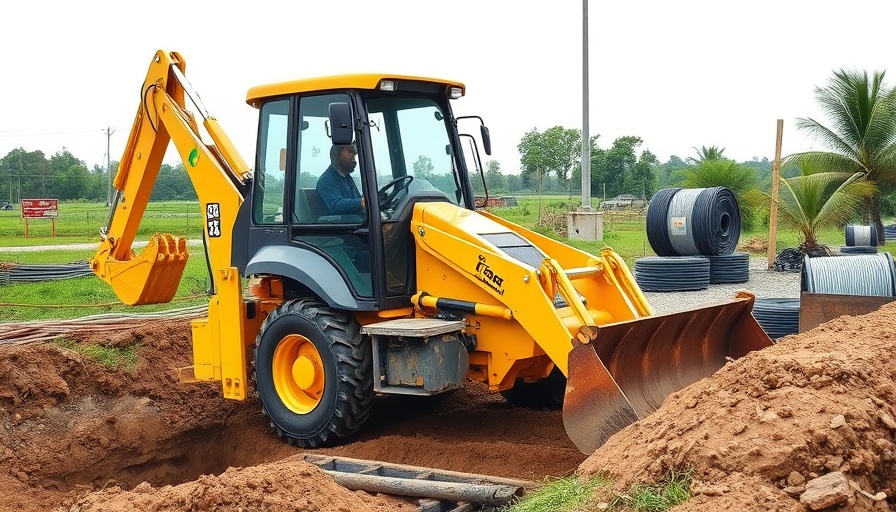
The Current Landscape of Backhoe Loaders: A Deep Dive
The backhoe loader market is witnessing significant shifts as we move into 2024-2025. Despite the introduction of new models by leading manufacturers, sales numbers reflect a downward trend. According to the latest data from Fusable’s EDA equipment financing figures and EquipmentWatch market trend reports, new backhoe sales in the U.S. have dropped by 16.7%, from 2,546 units sold in the previous year to 2,120 units in the 2024-2025 period.
Market Share Insights: Who's Leading the Pack?
Despite falling sales, established brands are still making a significant impact in the industry. Caterpillar has retained its crown with a commanding market share of 36.6%, followed by Deere at 29%, and Case at 19.5%. These brand dynamics illustrate the preferences of contractors and homeowners alike when selecting heavy machinery.
Emerging Trends: Compact Machines on the Rise
In what can be seen as a pivot in consumer preference, compact machinery is gaining attention. Backhoes now account for only 1.4% of all new financed machines sold. This trend shows consumers gravitating towards smaller, more versatile equipment that can better meet the challenges of modern construction sites, particularly in urban settings.
Spotlight on Top-Selling Models for the Upcoming Year
The Cat 420, Deere 320 P-Tier, and Case 580 Super N are leading the charge as the top-performing models for the upcoming year. With enhanced features and specifications, these machines promise efficiency and effectiveness on the job site. Furthermore, JCB is set to shake things up with its newly launched next-generation backhoe line, featuring state-of-the-art designs aimed at boosting productivity.
Highlights from JCB's New Offerings
At the recent ARA Show, JCB unveiled its next generation of backhoes, specifically the models in the 3CX and 4CX series. These machines offer upgraded transmissions for improved performance and a redesigned operator cab focused on user experience. The advancements in this line could position JCB as a strong competitor in the market.
Deere’s Enhancements: Comfort Meets Technology
During the 2025 Construction Field Days, Deere showcased its next-generation backhoes, boasting enhanced cab designs for improved comfort, visibility, and the industry's first factory-installed rear camera system. Such innovations are likely to attract operators who prioritize technology and comfort in machinery, signaling a shift toward user-centric design in the industry.
Future Predictions: Preparing for a Shifting Market
As contractors and builders adapt to these changing dynamics, several predictions can be made about the future of backhoe sales. The gradual decrease in sales is not simply a reflection of market demand but may also indicate a deeper shift towards hybrid and electric-powered machines. As sustainability becomes a focal point for the construction industry, companies will need to innovate vigorously to retain and grow their customer base.
What This Means for Contractors and Homeowners
For homeowners and contractors, understanding these trends is crucial. With backhoe loaders being a pivotal tool in large-scale home improvement projects, the choices available are expansive yet complex. Grasping the nuances of model capabilities and the overall market landscape will empower decision-makers to invest wisely in machinery that meets their specific needs.
Take Action: Invest in the Right Equipment Now
Given the trends outlined, it's essential for contractors and homeowners to not only stay informed about market fluctuations but also actively assess their equipment needs. As sales of backhoes decline and compact machinery gains traction, now may be the time to explore alternatives that offer better utility and efficiency for your projects.
 Add Row
Add Row  Add
Add 




Write A Comment